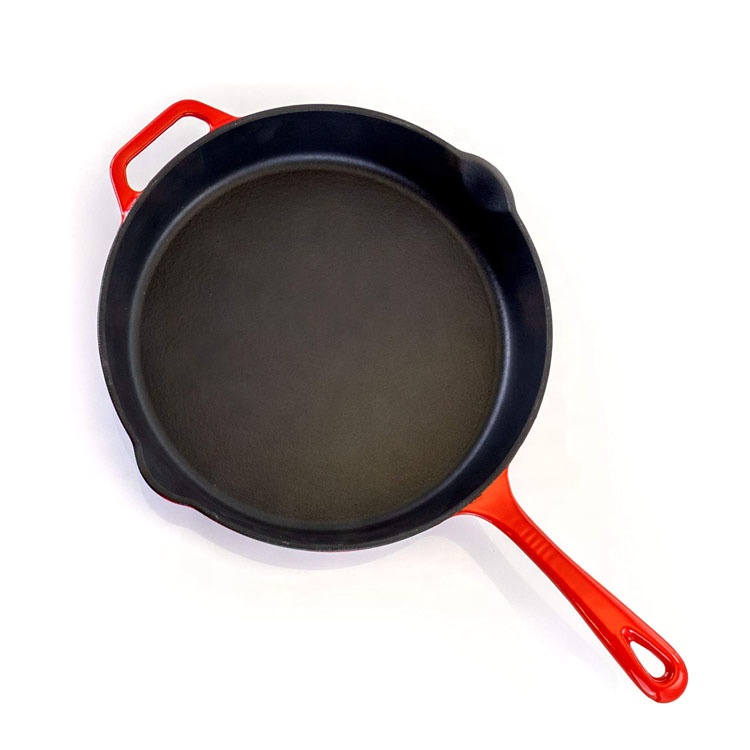
standard dutch oven size
Understanding Standard Dutch Oven Sizes
Dutch ovens have long been cherished by home cooks for their versatility, durability, and ability to enhance flavors in a variety of dishes. Originating in the Netherlands, these heavy cast-iron pots with thick walls and tight-fitting lids are ideal for slow cooking, braising, baking, and even frying. However, with their popularity comes an array of sizes, which can be overwhelming for those looking to purchase one. In this article, we’ll explore the standard sizes of Dutch ovens, their various uses, and how to choose the right one for your kitchen needs.
Standard Sizes of Dutch Ovens
Dutch ovens are typically measured by their diameter, and they range from small to large. The most common sizes include
- 2-Quart Ideal for individual servings or small meals, the 2-quart Dutch oven is perfect for soups, sauces, or side dishes. It is easy to handle and suitable for small households or people living alone.
- 4-Quart This size is great for cooking for two to three people. It can accommodate a variety of dishes, such as casseroles or one-pot meals. The 4-quart Dutch oven is a versatile choice that works well in smaller kitchens.
- 6-Quart The 6-quart Dutch oven is the most popular size among home cooks. It can handle meals for a family of four to six, making it a suitable choice for both everyday cooking and entertaining. This size is ideal for roasted meats, stews, and even baking bread.
- 8-Quart For larger families or those who love to host gatherings, the 8-quart Dutch oven is an excellent option. It allows for batch cooking and can easily accommodate larger cuts of meat or hearty soups. This size is also beneficial for meal prepping.
- 10-Quart and Larger At the higher end of the spectrum, 10-quart Dutch ovens and above are typically used for special occasions or large gatherings. These are perfect for sizable roasts, communal meals, and any recipe that requires significant volume.
standard dutch oven size

Considerations When Selecting a Dutch Oven Size
When choosing the right size Dutch oven for your needs, consider the following factors
1. Household Size If you live alone or cook for one, a smaller size (2-4 quarts) may suffice. However, if you frequently prepare meals for a family or large groups, investing in a 6-quart or larger model is advisable.
2. Cooking Style Think about the dishes you typically prepare. If you enjoy making soups, stews, and casseroles, a versatile 6-quart Dutch oven is a solid choice. For baking bread or roasting, larger sizes might be more beneficial.
3. Storage Space Dutch ovens can be quite bulky, so consider your kitchen storage. Ensure that you have enough space to store the pot, especially if you opt for a larger size.
4. Weight Dutch ovens are heavy, especially when filled. If you have wrist or mobility issues, you might want to choose a smaller size that’s easier to handle.
5. Material and Design While cast iron is the traditional material used, there are also enameled options. Enameled Dutch ovens can be easier to clean and come in various colors, allowing for more style in your kitchen.
Conclusion
Choosing the right size Dutch oven is crucial for maximizing your cooking experience. With options ranging from petite 2-quart versions to substantial 10-quart models, understanding the standard sizes can help you find the perfect fit for your culinary needs. Each size has its charm and can elevate your cooking, from simmering hearty stews to baking artisan bread. By considering your household size, cooking preferences, and storage capabilities, you can select a Dutch oven that will serve you well for years to come. Whether you're a novice cook or a seasoned chef, a well-chosen Dutch oven is a valuable addition to your kitchen arsenal.
-
Season Cast Iron Perfectly with GPT-4 Turbo TipsNewsAug.01,2025
-
High Quality Cast Iron Cookware - Baixiang County Zhongda MachineryNewsAug.01,2025
-
Premium Cast Iron Pan: Durable & Perfect HeatNewsAug.01,2025
-
High Quality Kitchen Durable Black Round Cast Iron Cookware Pancake Crepe Pan-Baixiang County Zhongda Machinery Manufacturing Co., Ltd.NewsAug.01,2025
-
Cast Iron Cookware - Baixiang County Zhongda Machinery | Nonstick, Heat ResistanceNewsAug.01,2025
-
High Quality Kitchen Durable Black Round Cast Iron Cookware - Baixiang County Zhongda Machinery | Non-Stick, Heat Retention, DurableNewsJul.31,2025


